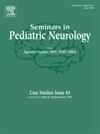Investigating the burden of cerebral palsy in low- and middle-income countries: Implications and priorities for pediatric neurology
IF 2.1
4区 医学
Q2 CLINICAL NEUROLOGY
引用次数: 0
Abstract
Cerebral Palsy (CP) is the most common pediatric physical disability worldwide presenting as a non-progressive motor dysfunction due to insults to the developing brain. While CP has a higher prevalence and burden in low- and middle-income countries, the most extensive research towards care and management of the patients with CP has been conducted in high-income countries. There is a disparate impact on CP from resource limited countries due to insufficient healthcare resources, barriers to healthcare access, inadequate public health awareness, and lack of accurate data.
In this article we examine the state of CP in low- and middle-income countries. We explore the multitude of environmental, socioeconomic, and infrastructural factors that contribute to the clinical profile of CP in these regions.
Finally, we high
light the primary areas of burden that need to be addressed in low- and middle-income countries: inadequate healthcare infrastructure and resources, lack of registries, social stigma with the and limited public health education, and strain on primary caregivers.
调查低收入和中等收入国家脑瘫负担:小儿神经病学的影响和重点
脑瘫(CP)是世界上最常见的儿童身体残疾,表现为由于发育中的大脑受到损伤而导致的非进行性运动功能障碍。虽然CP在低收入和中等收入国家的患病率和负担较高,但对CP患者的护理和管理进行的最广泛的研究是在高收入国家进行的。由于卫生保健资源不足、获得卫生保健的障碍、公众卫生意识不足以及缺乏准确的数据,资源有限的国家对CP的影响各不相同。在本文中,我们研究了低收入和中等收入国家的CP状况。我们探讨了环境、社会经济和基础设施因素对这些地区CP临床概况的影响。最后,我们强调了低收入和中等收入国家需要解决的主要负担领域:医疗基础设施和资源不足,缺乏登记,公共卫生教育的社会耻辱和有限,以及初级护理人员的压力。
本文章由计算机程序翻译,如有差异,请以英文原文为准。
求助全文
约1分钟内获得全文
求助全文
来源期刊

Seminars in Pediatric Neurology
CLINICAL NEUROLOGY-PEDIATRICS
CiteScore
4.80
自引率
0.00%
发文量
38
审稿时长
84 days
期刊介绍:
Seminars in Pediatric Neurology is a topical journal that focuses on subjects of current importance in the field of pediatric neurology. The journal is devoted to making the status of such topics and the results of new investigations readily available to the practicing physician. Seminars in Pediatric Neurology is of special interest to pediatric neurologists, pediatric neuropathologists, behavioral pediatricians, and neurologists who treat all ages.
 求助内容:
求助内容: 应助结果提醒方式:
应助结果提醒方式:


